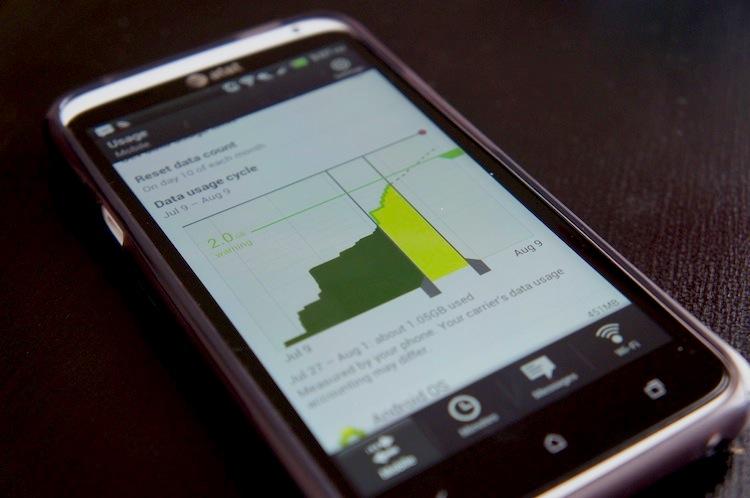
Having come from an era where mobile data usage was once unlimited, it can be a rough transition from the lax world of unlimited data to the hardships of having to deal with data caps with overages or severe throttling.
I remember a time when I would stream music to my phones for hours upon hours every day, watch video after video and download anything and everything that interested me, regardless of size. Now, unless I cling to any open Wi-Fi network available, I constantly have to be conscious of all the little bits I consume and keep an approximate tally of all the data I chew through each and every month.
A year ago, not long after the shift to tiered data had taken effect on Verizon, there weren't a lot of options for measuring how much data one had consumed for a given billing cycle. Sure, you could check your account online and it would give you an approximation that was generally about 24 hours behind. But there was no adequate way to track the bits as they were coming and going … in real time.
Aside from the periodical text alerts, you were on your own, left to guess and estimate how far – or close – you were to your monthly limit. As I have explained a few times in the past, monitoring and tracking data usage can be quite ambiguous, especially with undetected background data and automatic application updates. Data usage isn't as easy to judge or count as, say, minutes or text messages as there is no single metric for measuring or approximating the amount of data downloading a website or streaming a song or video will use.
It's easy, sometimes far too easy, to lose track and use much more than you anticipated. Luckily, times have changed. And now that the days of unlimited data are nearly gone, carriers and developers have come to offer a handful of options for monitoring and tracking data usage.
I didn't take the tiered data plunge until April. I had an account with T-Mobile prior to April that had only a 5GB limit, but it was a soft cap. After hitting 5GB, the data speeds were throttled. In April, I signed up with AT&T and (unwillingly) accepted true hard-capped data into my life.
Immediately, I started stressing over data consumption, compulsively checking my usage every few hours and after any large download. I used the myAT&T app and tracked my usage from day to day. Since I'm constantly switching back and forth between various phones, to track data throughout the day, I used the built-in data usage counter in Android (4.0+). And even though I still have unlimited data on my Verizon line (for now) with the iPhone, I still use the My Verizon app to periodically check my usage on that line for comparison.
By figuring out approximately how much I had used on average each day and comparing that to my monthly allowance of 5GB, I determined a safe number would be 150MB per day. Over 30 days, 150MB per day would amount to 4.5GB, giving me a 500MB buffer. And, come the end of the month, if I'm short, I can binge on data for a few days.
That said, as many of you said (and as I assumed) I would, I've grown used to life with limited data over time. It's not exactly something I enjoy, but I have learned my limits and can generally use my phone comfortably without having to worry about going over 5GB. But I still stress at times and pause before watching a video on YouTube or streaming over Spotify. I think, "What if I need this data at the end of the month?" I try to anticipate needing a huge amount of data at the end of the month and prioritize my usage.
Most of the time, I don't end up using all the data I've "saved". (It seriously makes me wish AT&T would implement rollover data.) But had I not this month, I would have been in trouble. I would have faced one, maybe two overages due to having just moved. I was having trouble with my home Internet and used my phone as a hotspot for the past two days. In just the past three days, I have used over 1GB of data and am much closer to my cap than I expected to be.
I'm curious, readers. How do you monitor your usage? Do you prioritize your usage? Do you stress over your usage and use applications or Android's built-in data counter to track your usage and plan for the remainder of the billing cycle? Or do you use your data non-stop and deal with overages as they may come?